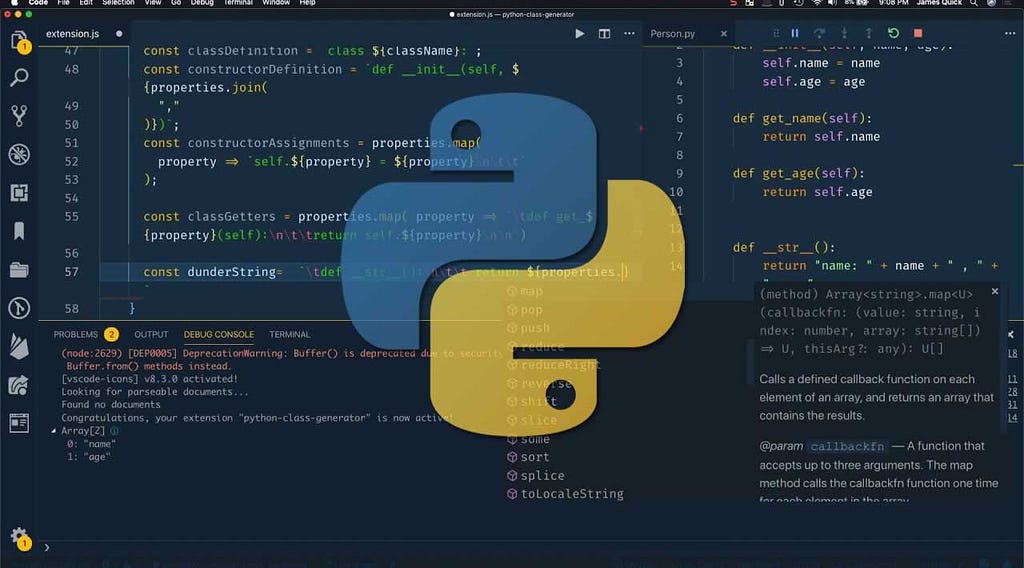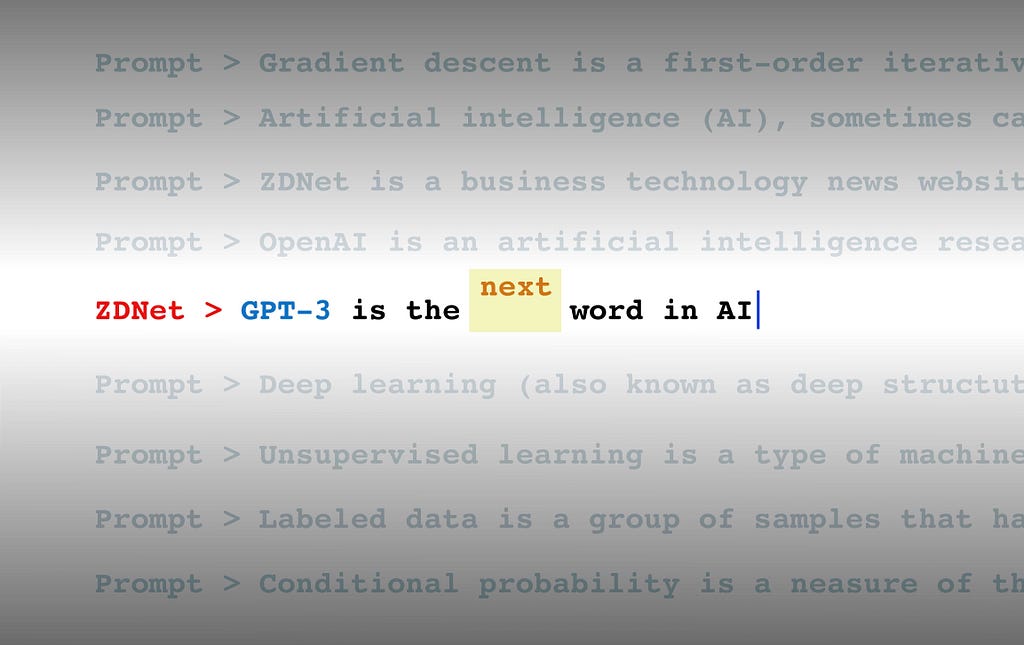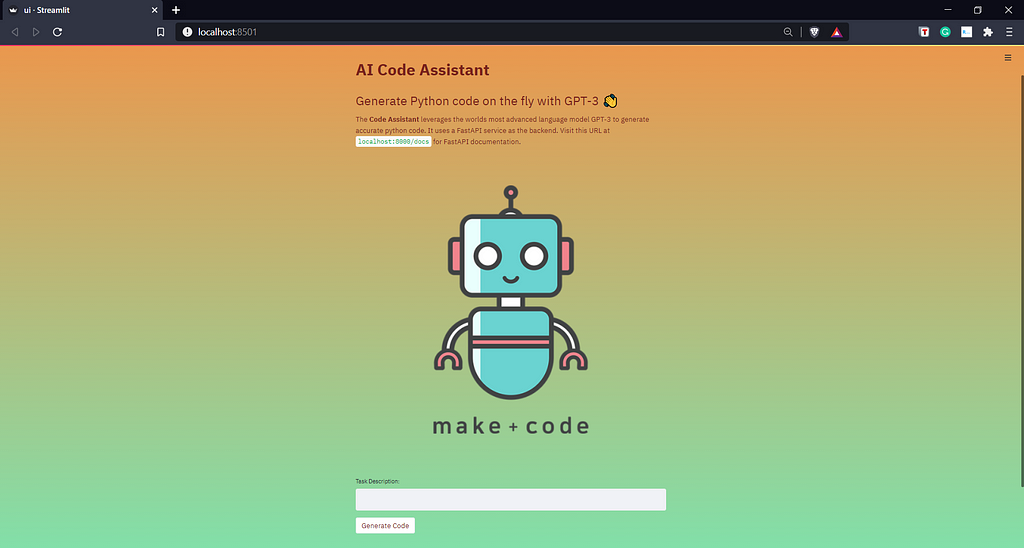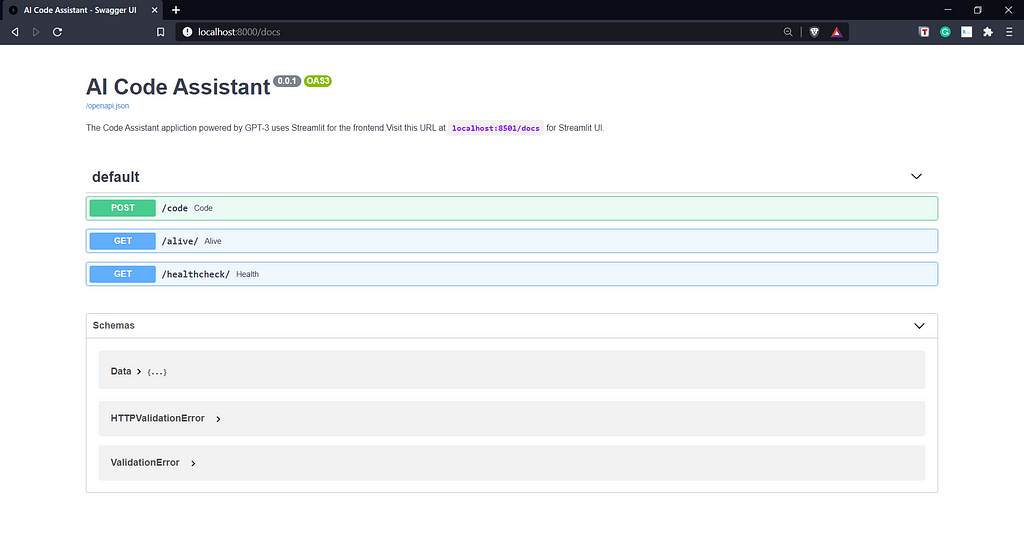
Python Code Assistant Powered by GPT-3
Last Updated on January 6, 2023 by Editorial Team
Last Updated on March 8, 2021 by Editorial Team
Author(s): Shubham Saboo
Natural Language Processing
Auto-generate python code from simple natural language by leveraging the world’s most advanced language model.

Pre-Requisites
I have collected the dots in the form of articles, please go through the below articles in the same order to connect the dots and understand the key tech stack behind Python Code Assistant- an application powered by GPT-3:
- FastAPI — The Spiffy Way Beyond Flask!
- Streamlit — Revolutionizing Data App Creation
- A Brief Introduction to GPT-3
The Promising GPT-3 — Is it the beginning of a new AI ecosystem?

GPT-3 from OpenAI has captured public attention unlike any other AI model in the 21st century. The sheer flexibility of the model in performing a series of generalized tasks with near-human efficiency and accuracy is what makes it so exciting. It has created a paradigm shift in the world of Natural Language Processing(NLP), where till now the models were trained based on the ungenralized approach to excel at one or two tasks.
GPT-3 is trained by OpenAI with a generalized approach on a massive scale involving 175 billion parameters which allows it to mimic functionalities of the human brain (like → GPT-3 is capable of generating text that is surprisingly human-like after only being fed a few examples of the task you want it to do). Like a human brain GPT-3 is able to learn and do things with few shots of training unlike the conventional way of training an NLP model over a large corpus, which is both difficult and time-consuming.
GPT-3 is highly flexible in terms of performing a number of NLP tasks, it empowers you with the ability to just do anything that you can imagine with natural language. This unique characteristic of GPT-3 is what makes it stand out from other NLP models. Many startups and enterprises have already begun to explore the next generation of the NLP application ecosystem.
Application walkthrough
Now I will walk you through the Python Code assistant application step by step:
While creating any GPT-3 application the first and foremost thing to consider is the design and content of the training prompt. Prompt design is the most significant process in priming the GPT-3 model to give a favorable and contextual response.
As a rule of thumb while designing the training prompt you should aim towards getting a zero shot response from the model, if that isn’t possible move forward with few examples rather than providing it with an entire corpus. The standard flow for training prompt design should look like: Zero Shot → Few Shots →Corpus based Priming.
For designing the training prompt for the python code assistant application, I have used the following structure for the training prompt:
- Description: An initial description of the context about what the code assistant is supposed to do and adding a line or two about its functionality.
- Natural Language (English): This component includes a minimal one-liner description of the task that will be performed by the code assistant. It helps GPT-3 to understand the context in order to generate proper python code.
- Code: This component includes the python code corresponding to the English description provided as an input to the GPT-3 model.
Input → English Language ; Output → Python Code


Let’s see an example in action, to truly understand the power of GPT-3 in generating python code from pure english language. In the below example, we will generate the python code by providing minimal instructions to the AI code assistant.
Conclusion
GPT-3 is on the verge of starting an AI revolution with the incoming of new startups and enterprise product offerings which will be solely based on GPT-3. It is venturing into all the dimensions of tech product space, by generating alpha as compared to previous AI language models. Due to its sheer flexibility and generalized approach, companies around the world are experimenting with GPT-3 to come up with a new generation of products to cater to the audience of the 21'st century.
References
- https://en.wikipedia.org/wiki/GPT-3
- https://openai.com/blog/openai-api
- https://www.technologyreview.com/2021/02/24/1017797/gpt3-best-worst-ai-openai-natural-language/
- https://venturebeat.com/2021/02/27/gpt-3-were-at-the-very-beginning-of-a-new-app-ecosystem/
If you would like to learn more or want to me write more on this subject, feel free to reach out.
My social links: LinkedIn| Twitter | Github

If you liked this post or found it helpful, please take a minute to press the clap button, it increases the post visibility for other medium users.
Python Code Assistant Powered by GPT-3 was originally published in Towards AI on Medium, where people are continuing the conversation by highlighting and responding to this story.
Published via Towards AI














